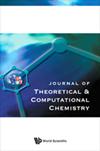一些查尔酮基N-(3-氨基丙基)咪唑对铝在气体和酸介质中的缓蚀作用:基于td -DFT的FMO、概念DFT、QTAIM和EDA研究
IF 2.4
Q3 Computer Science
引用次数: 1
摘要
本文通过量子化学计算研究了五种查尔酮基咪唑衍生物在气相和酸性介质中作为铝金属缓蚀剂的效果和作用方式。色散校正DFT (DFT- d3)和时变DFT (TD-DFT)计算分别在理论水平PBE0/def2-TZVP//PBEh-3c和CAM-B3LYP/def2- TZVP下进行。进行了概念DFT、分子中原子量子理论(QTAIM)和局部能量分解(LED)分析。LED分析是在具有摄动三元组(CCSD(T))/def2-SVP理论水平的耦合簇单和双上进行的。利用TD-DFT方法计算的前沿分子轨道能隙在3.574 ~ 4.444 eV之间,表明所研究分子具有良好的吸附和缓蚀效果。由于计算得到的相互作用能值为负,所研究的铝和抑制剂分子之间的相互作用在能量上是有利的。此外,QTAIM分析显示,抑制剂-铝配合物中的金属-碳、金属-氧和金属-氮相互作用,根据LED分析结果,主要是静电作用。计算的质子亲和(PAs)揭示了所研究的缓蚀剂在酸性介质中的防腐潜力,在273.15 - 343.15 K范围内与温度有明显的依赖关系。本文章由计算机程序翻译,如有差异,请以英文原文为准。
Corrosion Inhibition of Aluminium in Gas and Acid Media by Some Chalcone-Based N-(3-Aminopropyl)Imidazoles: TD-DFT-Based FMO, Conceptual DFT, QTAIM and EDA Studies
The efficacy and mode of action of five chalcone-based imidazole derivatives as corrosion inhibitors of aluminium metal in gas-phase and acidic medium have been investigated herein via quantum chemical calculations. Dispersion-corrected DFT (DFT-D3) and time-dependent DFT (TD-DFT) calculations were performed at PBE0/def2-TZVP//PBEh-3c and CAM-B3LYP/def2- TZVP levels of theory, respectively. Conceptual DFT, the quantum theory of atoms-in-molecules (QTAIM) and local energy decomposition (LED) analyses have been performed. The LED analysis was performed at the coupled-cluster singles and doubles with perturbative triples (CCSD(T))/def2-SVP level of theory. Frontier molecular orbital energy gaps calculated using the TD-DFT method are found to lie in the range 3.574 - 4.444 eV, indicative of good adsorption and corrosion inhibition efficacies of the investigated molecules. The interactions between aluminium and the inhibitor molecules studied are found to be energetically favorable, owing to negative computed interaction energy values. Furthermore, QTAIM analysis revealed metal-carbon, metal-oxygen and metal-nitrogen interactions in the inhibitor-aluminium complexes, which are predominantly electrostatic in character, according to LED analysis results. Calculated proton affinities (PAs) have revealed the anticorrosion potentials of the investigated inhibitors in acidic medium, with a noticeable dependency on temperature within the range 273.15 - 343.15 K.
求助全文
通过发布文献求助,成功后即可免费获取论文全文。
去求助
来源期刊
CiteScore
1.70
自引率
0.00%
发文量
0
审稿时长
3 months
期刊介绍:
The Journal of Theoretical and Computational Chemistry (JTCC) is an international interdisciplinary journal aimed at providing comprehensive coverage on the latest developments and applications of research in the ever-expanding field of theoretical and computational chemistry.
JTCC publishes regular articles and reviews on new methodology, software, web server and database developments. The applications of existing theoretical and computational methods which produce significant new insights into important problems are also welcomed. Papers reporting joint computational and experimental investigations are encouraged. The journal will not consider manuscripts reporting straightforward calculations of the properties of molecules with existing software packages without addressing a significant scientific problem.
Areas covered by the journal include molecular dynamics, computer-aided molecular design, modeling effects of mutation on stability and dynamics of macromolecules, quantum mechanics, statistical mechanics and other related topics.

 求助内容:
求助内容: 应助结果提醒方式:
应助结果提醒方式:


